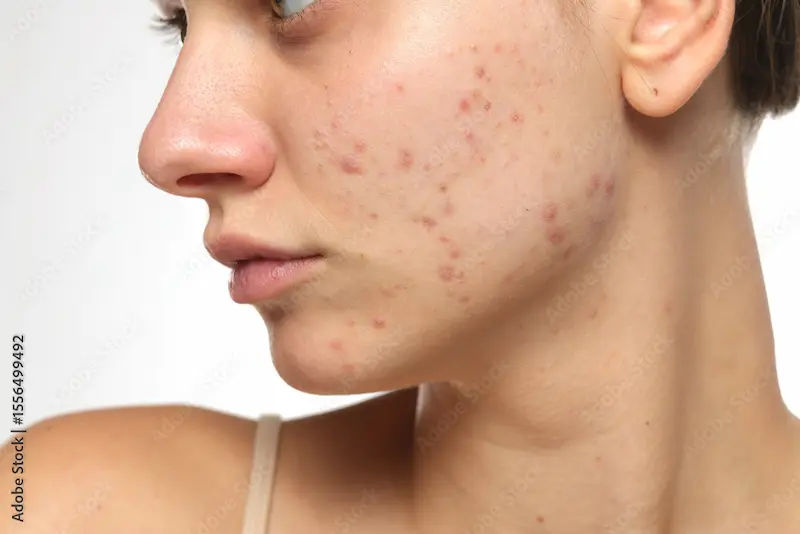Home Remedies to Soothe and Heal Sunburn Naturally
Learn safe, science-backed sunburn remedies and skin care tips to cool, soothe, and heal fast,what to use, what to avoid, and when to see a doctor.


Introduction
A painful, red sunburn can put a damper on your week and your skin’s health. The good news: a few simple, science-backed sunburn remedies and smart skin care steps can cool the sting, support healing, and prevent further damage. This guide explains exactly what works, what to avoid, and how to protect your skin next time, using trustworthy advice from major medical organizations.
Quick, science-backed sunburn remedies you can do now
These first steps help reduce heat, pain, and swelling and set your skin up to heal.
Cool the skin correctly
• Get out of the sun immediately. Move to shade or indoors.
• Take a cool (not icy) shower or bath for 10–15 minutes. Repeat as needed. Cool water gently lowers skin temperature and eases discomfort.
• Use cool, damp compresses on areas you can’t bathe.
• Avoid ice or ice water directly on the skin. Extreme cold can worsen damage.
Lock in moisture after every rinse
• Pat, don’t rub; your skin is dry, leaving it slightly damp.
• Apply a gentle, fragrance-free moisturizer right away to trap water in the skin. Products with aloe vera or soy can be soothing.
• Reapply moisturizer often to reduce tightness and flaking during healing.
Reduce pain and inflammation
• Consider an over-the-counter pain reliever such as ibuprofen or naproxen to help with pain and swelling, or acetaminophen for pain. Follow the label, and ask a clinician if you have medical conditions or take other medicines.
• Do not give aspirin to children or teens with viral symptoms.
Hydrate more than usual
• Drink extra water. Sunburn pulls fluid to the skin’s surface and can increase the risk of dehydration.
• Add small, frequent sips if you feel nauseated.
Soothe itching and irritation
• Try a short, cool bath with colloidal oatmeal to calm the itch.
• Apply calamine lotion to itchy areas (avoid broken skin).
• For small, unbroken areas, a thin layer of 1% hydrocortisone cream for a day or two can reduce redness and itch. Do not use on blistered or open skin, and avoid use on large areas or in young children unless advised by a clinician.
Leave blisters alone
• Blistering means a second-degree burn. Do not pop blisters; they protect the skin underneath.
• If a blister breaks on its own, gently clean with mild soap and water, apply a plain, non-stick dressing, and change it daily.
Consult a Top General Physician
Natural ingredients that can help and how to use them safely?
• Aloe vera gel (pure): Choose an alcohol-free, fragrance-free gel that lists aloe as a main ingredient. Apply a thin layer after cooling the skin and after bathing. Avoid products with added “caine” anesthetics (benzocaine, lidocaine) since they can irritate or cause allergic reactions.
• Colloidal oatmeal: Add to a cool bath and soak for 10–15 minutes to ease itch and irritation. Rinse off and moisturize afterward.
• Simple, fragrance-free moisturizers: Creams or gels with glycerin, hyaluronic acid, or soy are gentle options. Apply often.
Note: Thick oils and petroleum-heavy products can trap heat early on. Use lightweight gels or lotions in the first 24–48 hours; switch to richer creams later if skin feels very dry and no longer hot.
What to avoid with sunburn remedies?
Some popular “home hacks” can make things worse. Skip these:
• Ice directly on skin or ice baths (can damage skin further).
• Petroleum jelly or heavy oils immediately after a burn (can trap heat; consider later only once the skin is cool and no longer inflamed).
• Benzocaine or lidocaine gels/sprays (higher risk of irritation or allergy).
• “Kitchen cures” like vinegar, butter, toothpaste, or essential oils (may irritate or burn).
• Harsh soaps, scrubs, or exfoliants (can worsen irritation).
• Picking, peeling, or popping blisters (increases infection risk).
Smart sunburn aftercare and skin care while you heal
• Keep covering up: If you must be outdoors, wear loose, soft, tightly woven clothing that covers the sunburn, plus a wide-brim hat. Sunburned skin is extra sensitive to UV.
• Keep moisturizing: Apply a gentle moisturizer several times a day. When peeling starts, continue moisturizing; don’t pull flaking skin.
• Protect healing blisters: Use sterile, non-stick dressings. Watch for signs of infection (increasing redness, warmth, swelling, pus).
• Be patient: Mild sunburns often improve in 3–5 days; more serious burns (with blisters) may take longer. Color changes can last weeks.
• Pause retinoids, exfoliants, and strong actives: Hold off on harsh acne treatments, retinoids, or acids until skin is calm.
When to seek medical care?
Get medical help if you notice any of the following:
• Severe blistering covering a large area, or sunburn on the face, hands, feet, or groin.
• Fever, chills, nausea, confusion, fainting, or signs of heat illness.
• Severe pain that doesn’t improve with home care.
• Signs of infection in blisters (worsening redness, swelling, pus, red streaks).
• Dehydration signs (extreme thirst, dizziness, dark urine, little urination).
• Eye pain, light sensitivity, or vision changes after intense sun (possible photokeratitis).
• Sunburn in infants and young children, especially with fever or widespread redness.
Prevention is the best skin care: protect your skin every day
• The most effective “sunburn remedies” happen before you burn. Build a daily sun safety routine:
• Use a broad-spectrum sunscreen SPF 30 or higher. Apply 15 minutes before going outside and reapply at least every 2 hours, and after swimming or sweating.
• Use enough: About 1 ounce (a shot-glass amount) for full-body coverage; more for larger bodies.
• Don’t miss spots: Ears, neck, scalp part, tops of feet, and the back of hands.
• Dress for the sun: Long sleeves and pants, UPF-rated clothing, wide-brim hat, and UV-blocking sunglasses.
• Seek shade: Especially from 10 a.m. to 4 p.m., when UV is strongest. Remember: sand, water, snow, and concrete reflect UV.
• Check the UV index: Plan outdoor time when UV is lower if possible.
• Protect lips: Use an SPF lip balm and reapply often.
• Skip tanning beds: They emit high levels of UV and increase skin cancer risk.
Simple 24–48 hour after-burn plan (at a glance)
• Every few hours: Cool soak or shower; pat dry; apply aloe or a gentle moisturizer.
• As needed: Oral pain reliever per label; cool compresses on hot spots.
• Daily: Extra water; stay out of the sun or keep the area fully covered; avoid irritants.
• Ongoing: Switch to richer moisturizer once heat subsides; continue sun protection. Consult a Top General Physician
Consult a Top General Physician

Dr. Syed Ismail Ali
General Practitioner
7 Years • MBBS
Hyderabad
Apollo 24|7 Clinic, Hyderabad

Dr. Anand Ravi
General Physician
2 Years • MBBS
Bengaluru
PRESTIGE SHANTHINIKETAN - SOCIETY CLINIC, Bengaluru

Dr Syed Mateen Pasha
General Physician
2 Years • MBBS
Bengaluru
PRESTIGE SHANTHINIKETAN - SOCIETY CLINIC, Bengaluru

Dr. Harshendra Jaiswal
General Physician/ Internal Medicine Specialist
12 Years • MBBS , MD (General medicine)
Kolkata
108 DHANA DHANVANTARI Clinic, Kolkata
(25+ Patients)
Dr. Ramya Reddy Jonnala
General Physician/ Internal Medicine Specialist
2 Years • MBBS
Secunderabad
KK Home Clinic, Secunderabad
Consult a Top General Physician

Dr. Syed Ismail Ali
General Practitioner
7 Years • MBBS
Hyderabad
Apollo 24|7 Clinic, Hyderabad

Dr. Anand Ravi
General Physician
2 Years • MBBS
Bengaluru
PRESTIGE SHANTHINIKETAN - SOCIETY CLINIC, Bengaluru

Dr Syed Mateen Pasha
General Physician
2 Years • MBBS
Bengaluru
PRESTIGE SHANTHINIKETAN - SOCIETY CLINIC, Bengaluru

Dr. Harshendra Jaiswal
General Physician/ Internal Medicine Specialist
12 Years • MBBS , MD (General medicine)
Kolkata
108 DHANA DHANVANTARI Clinic, Kolkata
(25+ Patients)
Dr. Ramya Reddy Jonnala
General Physician/ Internal Medicine Specialist
2 Years • MBBS
Secunderabad
KK Home Clinic, Secunderabad
More articles from Skin Care
Frequently Asked Questions
1) How long does a sunburn take to heal?
Mild sunburns usually improve within 3–5 days. Moderate sunburns with peeling can take about a week. Blistering sunburns may take up to two weeks or more to fully heal.
2) Is aloe vera really effective for sunburn?
Aloe vera gel can provide cooling relief and add moisture, which may help comfort the skin while it heals. Choose a pure, alcohol-free, fragrance-free gel and avoid products that contain benzocaine or lidocaine.
3) Can I use coconut oil or petroleum jelly on a fresh sunburn?
Not at first. Heavy occlusive products can trap heat in the skin. Stick with cool water, light gels or lotions (aloe, soy) in the first 24–48 hours. Once the skin no longer feels hot or inflamed, switching to a richer, fragrance-free cream can help with dryness.
4) Should I pop a sunburn blister?
No. Blisters protect the skin underneath. If one opens on its own, gently wash with mild soap and water, apply a non-stick dressing, and watch for signs of infection.
5) What SPF should I use, and how often should I reapply?
Use a broad-spectrum SPF 30 or higher. Apply generously (about 1 ounce for body coverage) 15 minutes before sun and reapply at least every 2 hours, and after swimming or sweating.




